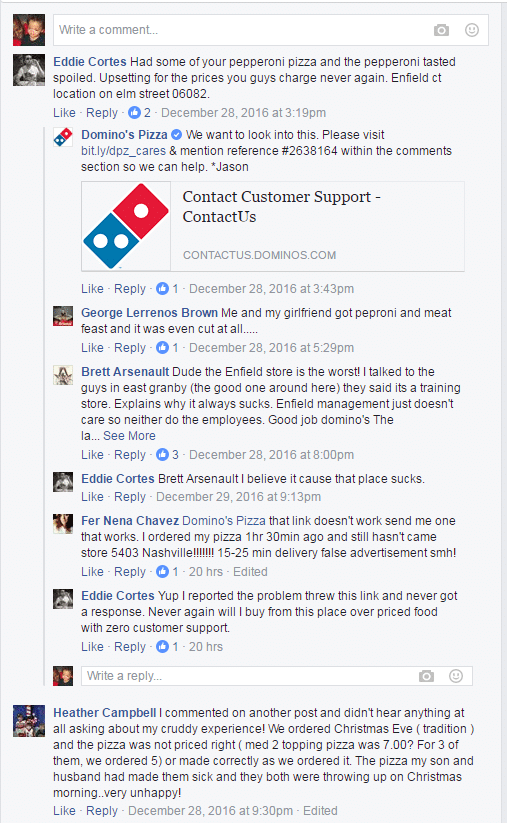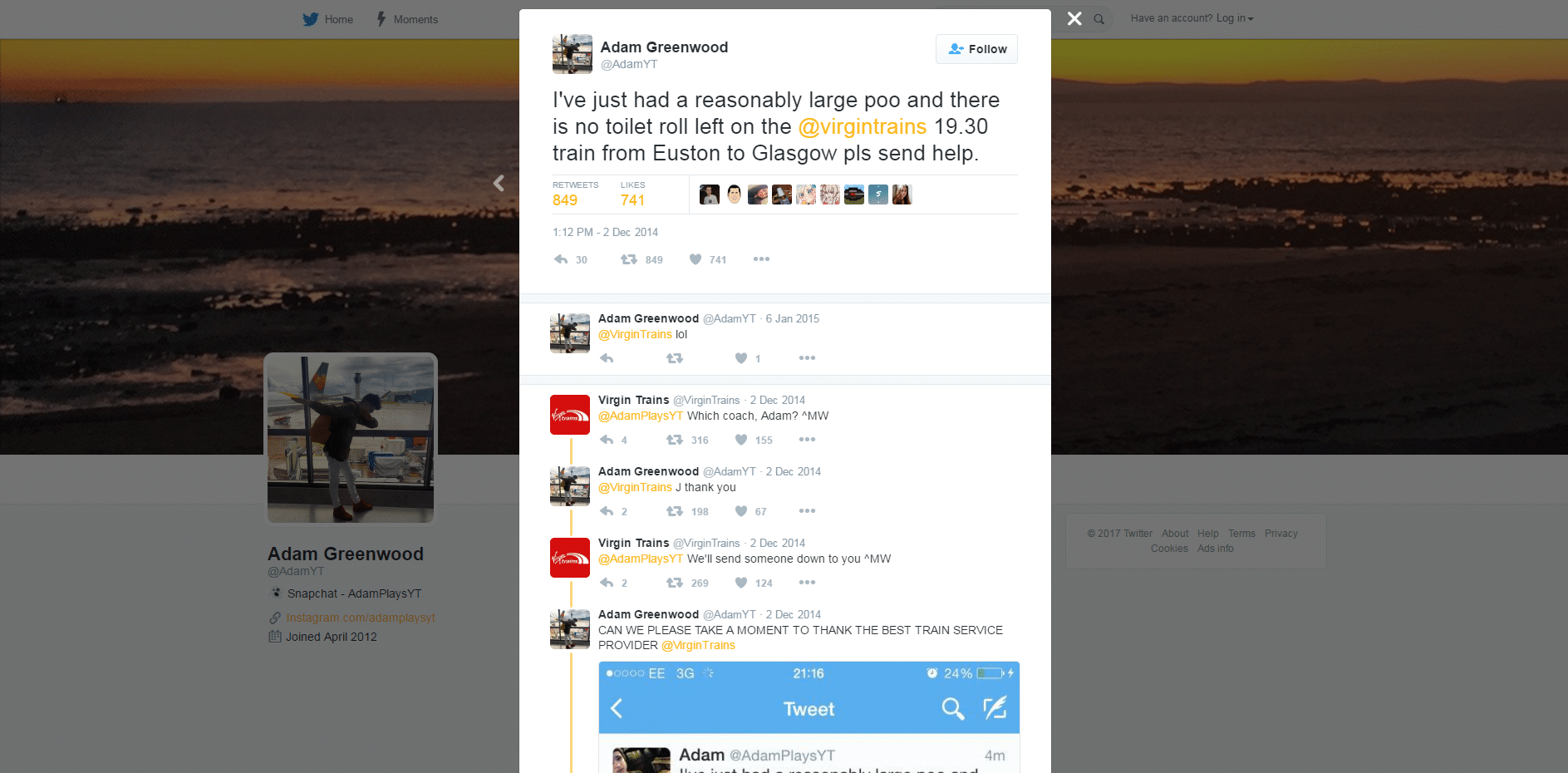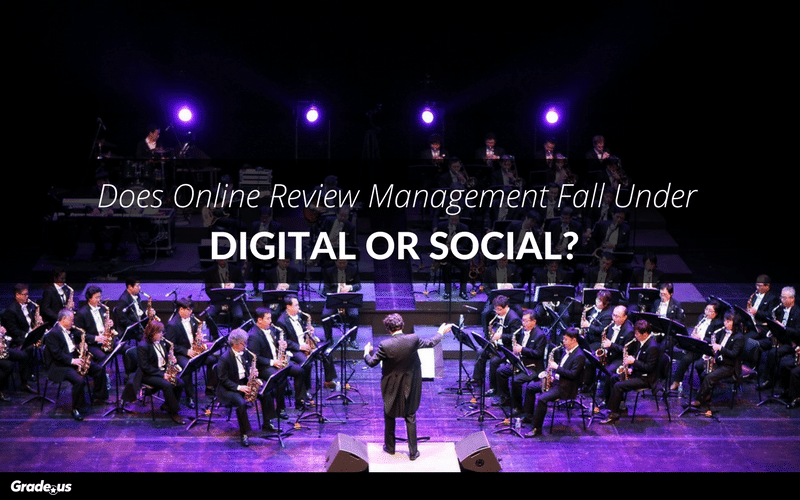Does online review management fall under digital or social? It’s a question that doesn’t even appear on most organization’s radar. But it should.
It’s no wonder with so many marketing strategies out there, it’s easy to get overwhelmed. It’s easy to think, “It doesn’t matter where it falls!”
In fact, who cares? As long as we’re getting the results we need from our reviews there’s no problem. Businesses have fallen into the trap of believing it doesn’t matter. Maybe you’ve heard the saying.
Perfect is the enemy of good!
The implication is that you focus on good first, then when you’re established, you perfect things as you go along.
This strategy will undermine your reviews
Choose the wrong team and your reputation is at stake.
1. Customers who leave positive and negative reviews are ignored.
2. Your team’s response to customer problems are perceived as cold and clinical or pleasant yet unreliable. It’s especially a problem if an agency is working on your behalf.
3. Review management becomes difficult or impossible to quantify.
4. When you do get results they’re one sided. You protect your reputation but customers are unsatisfied and unhappy, or customers are happy but you’re losing money.
Someone needs to take point on your review management campaigns; you’re faced with two choices, digital or social. But you find yourself in a tough spot. This gets even more complicated if you have more than one agency working for your company. Who’s handling your online review management? Not all digital marketing firms offer these services.
There’s a steep price to pay regardless of the team you choose. How do you handle a situation like this?
Your situation demands you accept your fate
Place your review management in the digital basket and you’re often left with a quantitative approach that’s cold and clinical. While customers are looking for empathy and compassion, digital usually focuses on results and returns.
Shift review management to the social side and qualitative “results” become the norm. Customers may leave an engagement feeling good about their interaction with your brand, but your pockets are empty.
Sure, some digital marketers focus on emotional intelligence and some social media marketers care about analytics. But, it’s going to be a disaster either way – at least until you realize the truth. Shifting your review management to digital or social isn’t the problem…
The real problem: Operational silos
Let’s test the either/or approach to see what works.
Say you’re Domino’s Pizza. You’ve assigned review management to digital. Then the moment of truth comes. You have an unhappy customer.

A customer ordered two pizzas, choosing the toppings and sides they want. Their order arrives. They sit down to eat, only to find their pizzas arrived with no pizza sauce.
It’s not a formal review…yet. Who should handle this sticky situation? Does this informal review fall under digital, customer service, or social? Who follows up, who takes the lead?
See the problem?
Let’s look at another example. Eddie, a Domino’s Pizza customer, just had a pepperoni pizza. The meat was spoiled.

How did Domino’s respond?
We want to look into this. Please visit bit.ly/dpz_cares & mention reference #2638164 within the comments section so we can help. *Jason
No apology, zero empathy for the customer’s situation. No focus on their poor experience. Just a cold, clinical response and a focus on shifting the conversation offline.
Yikes.
That could have gone better. What about when social handles things?

Here’s how they responded to customers.
We hate to disappoint you! Please use reference#2631143 at http://bit.ly/dpz_cares so we can help out. *RC
Much better, but still not ideal. Domino’s didn’t apologize or take ownership of their role in the problem. They didn’t empathize and they didn’t attempt to solve the problem. It almost seems like this was a canned response. The either/or proposition isn’t going so well, is it?
But what can you do? You’re out of options, right?
Actually no.
There’s a third option that’s typically ignored. It’s an option that comes with flexibility. You’re able to pursue the results you want, the way you want.
But you’re free to change your mind when you need to.
Okay, so what is it?
One team takes point while all other teams support.
One team is able to focus their time and attention on the higher level details — the strategy, messaging and purpose, while all the other teams focus on their specialties.
It’s one of the best ways to approach things.
Don’t believe me?
Here’s an example of this strategy in action.

Adam’s on the train. He’s just taken a large poo and he’s fresh out of toilet paper. He’s not done using the bathroom, but he needs help and fast. So he hops on his phone, reaches out to Virgin Trains via Twitter and asks for help.
Virgin responds immediately, sending someone down with a roll of toilet paper. This could have ended badly but thanks to their quick response, it didn’t.

Did you catch the details behind this hilarious story?
- They responded quickly. Virgin’s response was prompt and discreet. They immediately adapted to Adam’s awkward situation.
- Teams worked together. Social and digital teams worked together. Support staff on the train followed the tone set by first responders.
- Teams compensated for each other. Each team comes with inherent strengths and weaknesses. The teams in this story compensated for each other, exceeding Adam’s expectations as a result.
- Their response is adaptive. They’re able to adapt quickly to customer needs because they’ve decided who will take the lead ahead of time.
That’s a good question though, who should take the lead? More importantly who decides? There’s an obvious solution to this problem.
Let customers decide who takes the lead
Each team has a specialty. Social typically deals with social media – tweets, posts, status updates, you name it. Digital handles the overall direction and responds to formal reviews. Both require an element of customer service to be successful. And each team relies on customer facing teams to solve the unexpected problems.
So you let customers decide.
The channel customers use to approach or discuss your business is the channel that takes the lead. If customers share an informal review on twitter, social takes the lead. Are customers posting Google reviews? Let digital handle it.
This doesn’t require a lot of painful restructuring.
But it simply won’t work with operational silos. Customer service, fulfillment and marketing teams should be free to work with each other, doing what’s best to take care of the customer.
Instead of forcing customers into a predetermined hole, we meet them where they’re at.
Operational silos create resistance
When teams jockey for control, the focus becomes self absorbed. Operational silos create cliques and conflict, making it difficult to work with reviews. This applies to business and agency relationships as well.
If you use an agency, are they helping to acquire more reviews? Are they responding to reviews? You need to have a clear understanding of responsibilities between the agency and your business.
If you have a digital marketing team working to get your business more reviews they’re likely to be more focused on generating more leads and customers as a result of the reviews. Whereas, a social media team might be more concerned about PR and the brand image being impacted by the reviews.
The important part here is that you need both. Better brand image and PR will help lead to more customers and generating more reviews and marketing those reviews is also a giant piece of the puzzle.
Customer support is the solution, but you can’t just leave review marketing in the hands of your customer service team. Social media as well as digital marketing teams need to be working together towards the same goals for the business. Communication is key!
What if you don’t need to divide tasks? What if a single team can handle everything?
It’s best to try things out. Give it a shot. If you believe a single team can handle review management in its entirety, regardless of the channel, prove it. Show others it can be done well without getting in another team’s way. What works for one company may not work for another, testing answers this question definitively.
What if you don’t need review management?
Everyone needs review management. Don’t have a whole lot of reviews? You’re losing customers and sales. Buried under an avalanche of negative reviews? Positive reviews help you dig your way out. Have lots of positive, all-star reviews on yelp? Your customers aren’t seeing reviews on Facebook.
What this means is this. Your…
- Volume of reviews
- Frequency of reviews
- Distribution of reviews
- Star Ratings
These all have a direct impact on your review strategy and more importantly customer acquisition. What if customers aren’t actively seeking out your reviews? Showcase reviews on marketing materials like testimonial pages, share positive reviews on social media, create case studies, etc. If customers aren’t looking for reviews bring the reviews to them.
Regardless of your situation, customers want more.
So back to the big picture question, does online review marketing fall under digital or social?
Your customers should decide. The channel customers use to approach your business is the channel that takes the lead. This doesn’t require a lot of painful restructuring. Just a willingness to work with customers as they are. You can formally assign the task of generating more reviews to one team alone but that doesn’t mean other departments can’t or shouldn’t also work towards the same, common goal.
Online review management and marketing isn’t an either or proposition. It’s about your customers. Reviews, whether they’re formal or informal, are an opportunity to serve.
Digital or social, who cares?
Your customers do.
Give them the opportunity to decide. Show you’re willing to meet them where they are, that you’re willing to listen and you’ll achieve the results you’re looking for with your online review management and marketing, no silos needed.
About the Author
Andrew McDermott
Andrew McDermott is the co-founder of HooktoWin. He shows entrepreneurs how to attract and win new customers.











